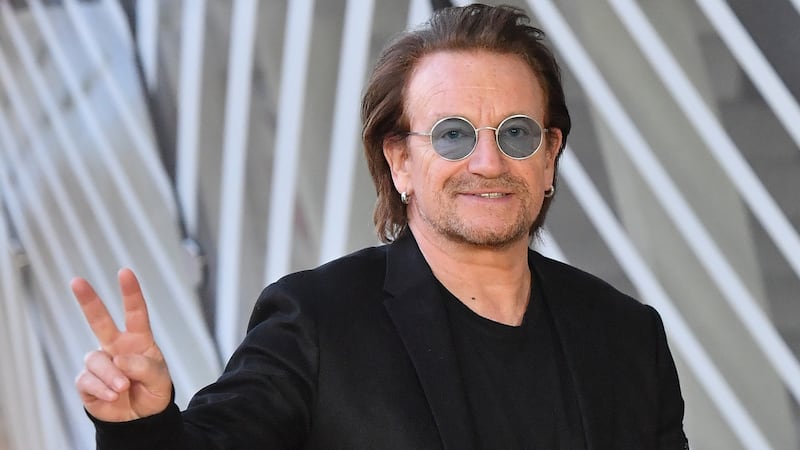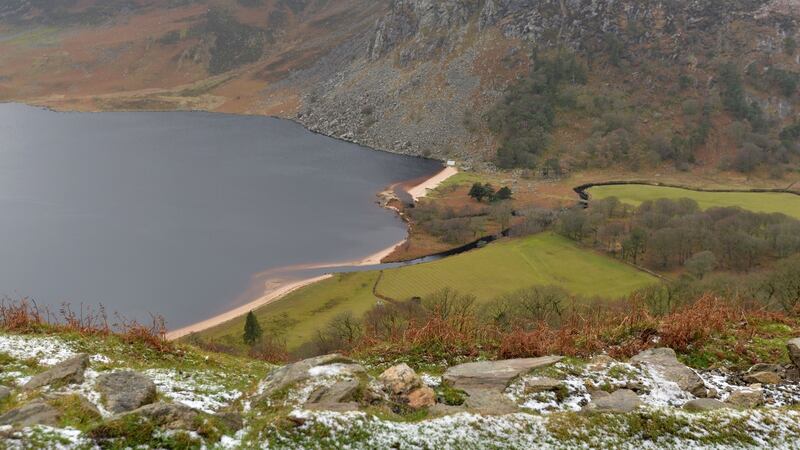U2 lead singer Bono tried to buy Luggala, the Co Wicklow estate and house owned until recently by the Guinness family and home to Garech Browne until his death in 2018, it has emerged.
The 5,000-acre upland estate centred on Luggala Lodge, an 18th century single-storey gothic jewel perched on the edge of Lough Tay near Sally Gap, was put up for sale in 2017 and was sold earlier this year.
Browne, a patron of the arts who was passionate about Irish music and poetry and led a somewhat eccentric life as a bohemian dandy, is the subject of Wednesday night's documentary on RTÉ, Last Days at Luggala. He died in London in March 2018 en route to Roundwood from India.
The sale of the property (occasioned in large part by the consequences of Browne's champagne-for-breakfast lifestyle) sparked intense interest from a host of wealthy international buyers, amid calls for the State to buy it to add to Wicklow National Park. While the Office of Public Works discussed buying at least part of the estate from the vendors, the Barbican International Corporation, a Guernsey-based Guinness family trust, in the event it was wealthy individuals who made the serious running.

One of them was Bono, acting in concert with several other people, who wanted to ensure that Luggala was protected and preserved.
New owner ‘great’
“We were all scared that someone would take it away and ruin it but apparently the new owner is great,” Bono said in an interview.
The U2 singer first came across Luggala in the 1980s when the band were looking for an alternative recording location to the relative sterility of conventional studios.
Like many before him and since, Bono was captivated by the beauty of the setting – the lake, house and woodland around it.
“We went down to look at it and that’s when I certainly fell under its spell,” said Bono. “It’s like Middle Earth. It really is hard to describe – the feelings in that estate. I was 24. And then you meet this creature [Garech Browne] and you realise that he’s just performing this really vital task for Irish music . . .

“Those trees! The trees look thousands of years old, though they can’t be. I’ve never seen trees like that. And then the moss garden. [Garech] was quite the horticulturist. He was interested in mosses. The lough is as deep as that rock face is high. . . It’s a very striking, extraordinary property.”
Concerned that the estate might be “lost” or “Disney-fied”, the singer sought to create a consortium – “a load of people who were interested and cared about it” – to buy it from Brown, who had expressed a wish to remain living there until his death, notwithstanding any change in ownership.
“At one point, we were panicking and trying to put together some people to see if we could keep it, but I failed in that endeavour,” he said.
Asked how far the endeavour got, the singer replied somewhat wistfully: “Not far enough!”
According to Nick Crawford, the Dalkey-based estate agent who handled the sale with Sotheby's of London, there were some 30 parties interested in buying.
“We had a lot of offers,” he said while declining, for reasons of confidentiality, to discuss who was behind any of them.
“All these people are very private by nature. They’re either well-known in business, music, computers, fashion, or just well known. . . You are dealing with billionaires.”

A sale had been agreed before Mr Browne died. “We did “sale agreed” to a party who didn’t complete. We thought it was a perfect fit: they were buying, he was allowed to stay and he [would have gone] to his grave happy,” Mr Crawford told The Irish Times. By the time the deal collapsed, other parties had lost interest in buying the estate.
One of the property viewers, though apparently just out of curiosity and without intent to buy, was the 26-year old US singer Ariana Grande.
“She’d heard about it and said she would love to see it. So as a favour, we did,” said Mr Crawford.
"Looking at the visitor's book, she saw a picture of Garech and she went 'Oh my God, he is the most amazing man I have ever seen in my life'. This was a photograph of Garech in one of his outfits. She has 110 million flowers on her Instagram account and she thought Garech Browne was the most interesting man she had ever seen!"
Property magnate
The eventual buyer was a 63-year-old UK-based Italian hedge-fund investor and property magnate, Count Luca Rinaldo Contardo Padulli. He runs Camomille, an investment company, and also owns some 25,000 acres in the Home Counties of England, as well as in Norfolk, North Yorkshire and London.
According to Companycheck.co.uk, the Count’s business interests have £36.3 million (€42.7 million) in cash, which, along with assets valued at £365.2 million and liabilities of £47.2 million, give him a net worth of £318.3 million.
For Bono and is associates, there was “great relief” at the purchase because it means Luggala “will be preserved at least for another while”.
He says the best way now to honour Garech Browne's legacy would be for the State to help preserve the archive of Claddagh Records, the company Browne founded in 1959 to promote Irish music and poetry.

The archive has a wealth of music, including recordings of the piper Leo Rowsome and early works by the Chieftains, as well as recordings of poets including Patrick Kavanagh, Austin Clarke and Seamus Heaney.
“I think the State should really think about the archive, they really should. Claddagh Records is priceless,” said Bono.
Did he regret not closing the consortium deal?
"I need another project like a hole in the head," he quipped. "I was getting a lot of rolling eyes from Mrs Hewson. [But] it would have caused me and others great pain if it had gone into the wrong hands."










